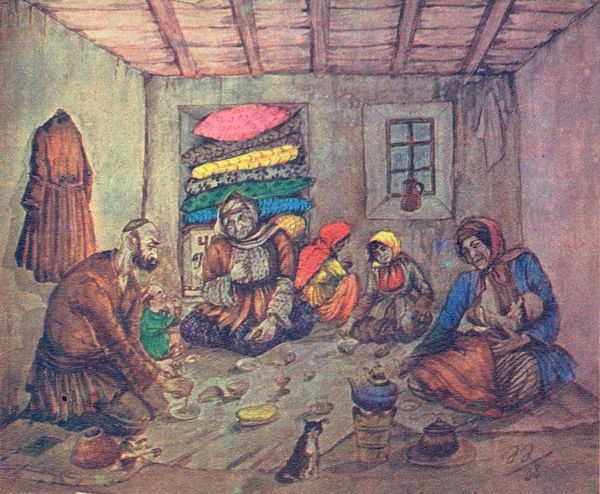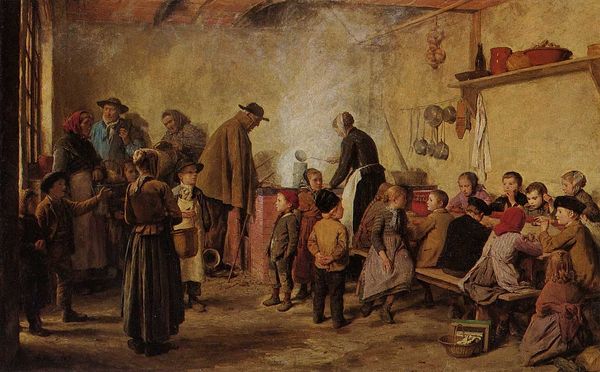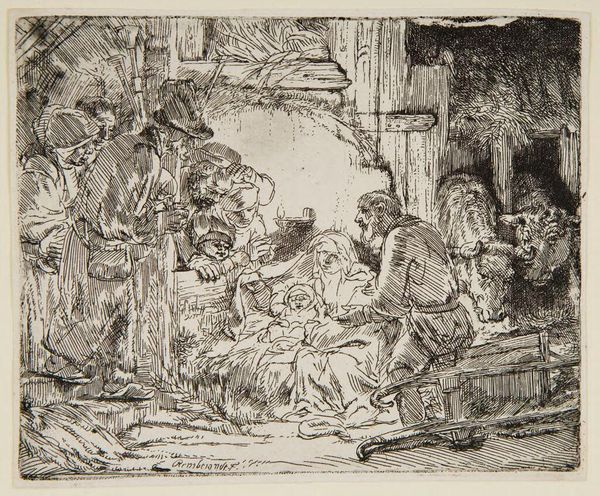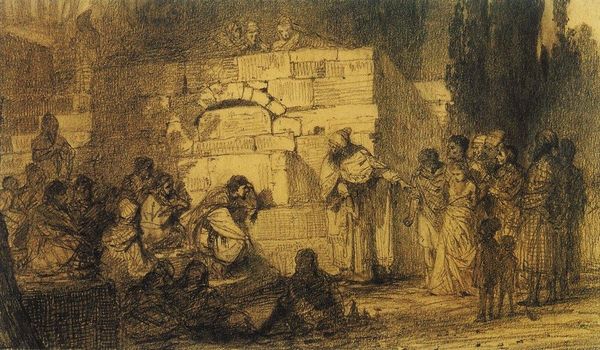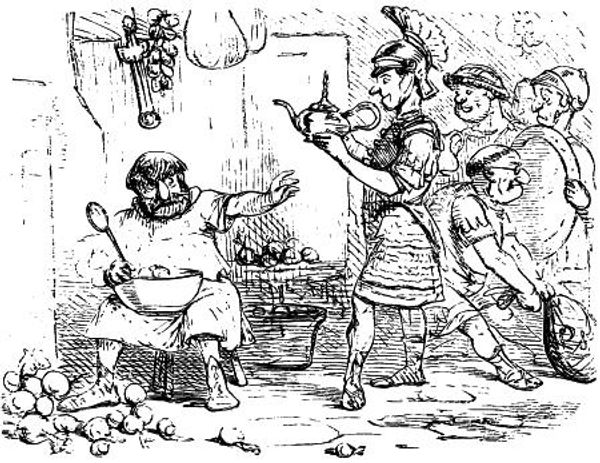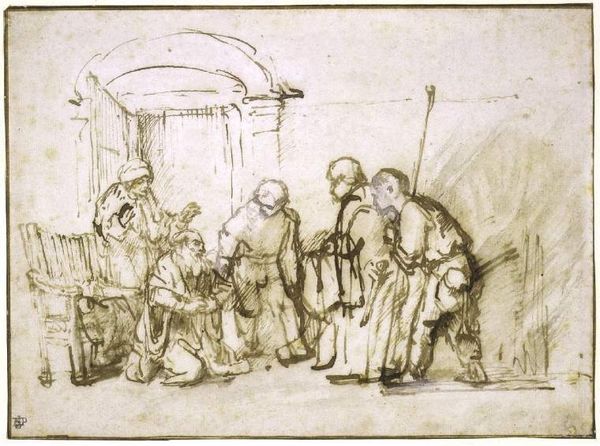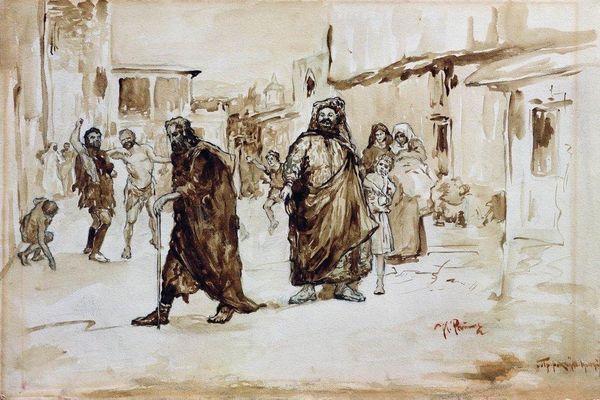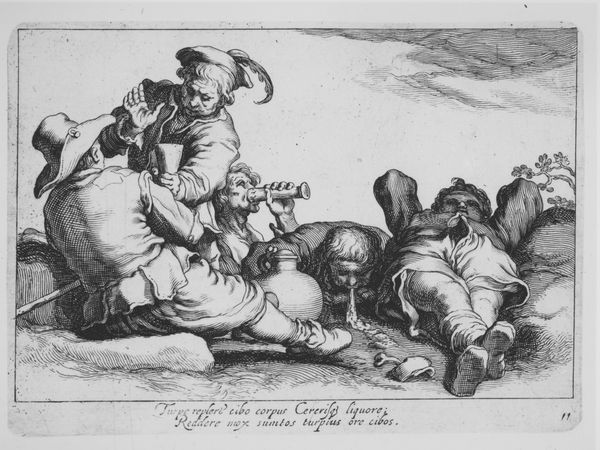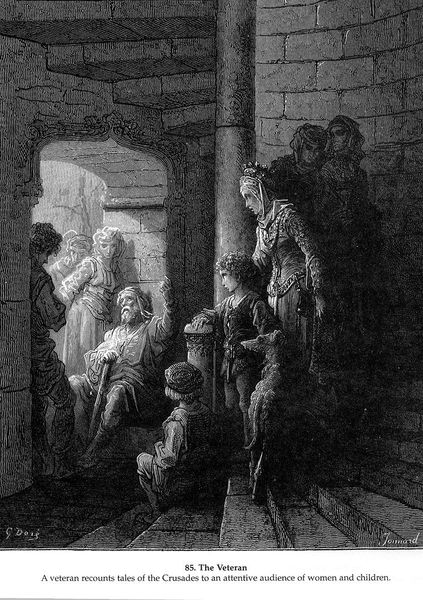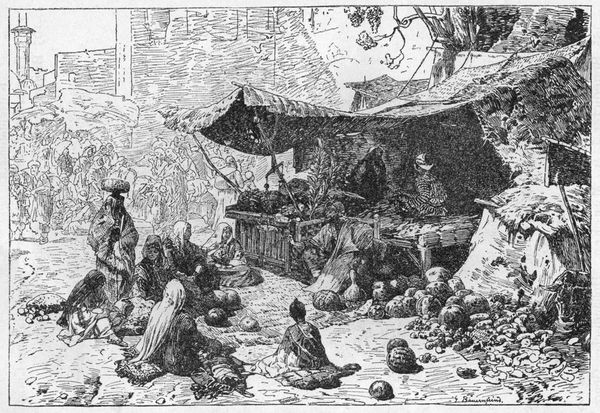
painting, watercolor
#
portrait
#
dutch-golden-age
#
painting
#
figuration
#
watercolor
#
watercolour illustration
#
genre-painting
Copyright: Public domain
Curator: Welcome. Here we have Adriaen van Ostade's "Scene in the Tavern," a watercolour illustration from the Dutch Golden Age. Editor: Well, my first impression is that it evokes a real sense of melancholy. The colours are muted, and everyone seems weary or lost in thought. What strikes you most about the composition? Curator: The asymmetrical balance immediately draws the eye. The grouping of figures to the right is offset by the single figure and children on the left. The rough, almost frantic line work builds up textures that serve the narrative by adding a feeling of authenticity to a humble interior scene. Editor: Authenticity, yes, but what kind? Given the social context of 17th-century Netherlands, are we seeing a romanticisation or a critique of working-class life? The tavern was a space of refuge but also exploitation. What can we tell about the scene in terms of class dynamics or gender roles? The woman attending to the central, seemingly drunken figure is of particular interest. Curator: Note the subtle shifts in tonal value; Ostade used washes of watercolour to differentiate form. The saturation differs to distinguish planes—the background appearing comparatively muted. Also, consider the carefully placed areas of blank space in the composition that suggest an unfinished quality, which allows the viewer to engage interpretively. Editor: True. The materiality does contribute to that unfinished quality, almost mirroring the unrefined conditions of these individuals’ lives. But by employing that aesthetic strategy, isn’t the artist making a social commentary, subtly critiquing the prevailing norms that keep people in such a state? What kind of emotional message does it ultimately leave us with? Curator: Ultimately, it offers a snapshot into the aesthetic preferences of the era—its tendency to favour humble subject matter—and Ostade's mastery in depicting scenes of ordinary life using deceptively simple means. Editor: But simplicity is a carefully crafted artistic position. This scene subtly interrogates themes of social equity and the realities of daily life. This piece underscores the importance of historical awareness when engaging with these intimate works.
Comments
No comments
Be the first to comment and join the conversation on the ultimate creative platform.
